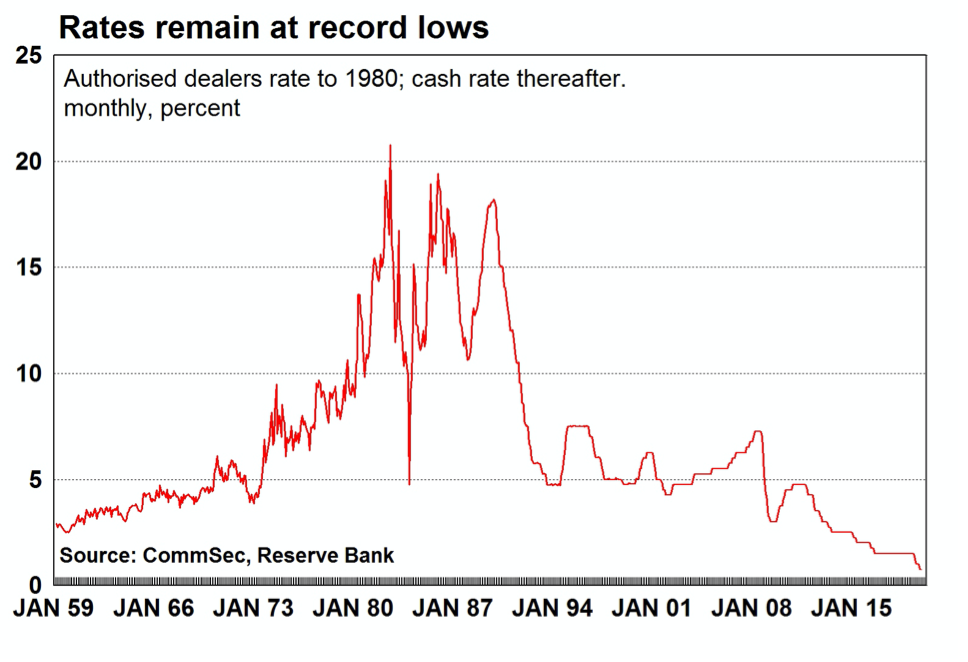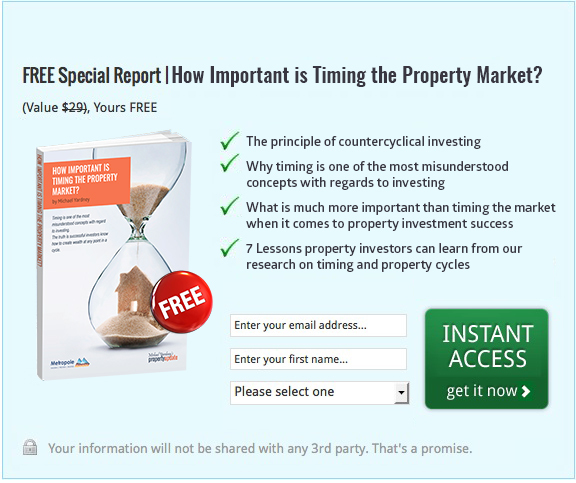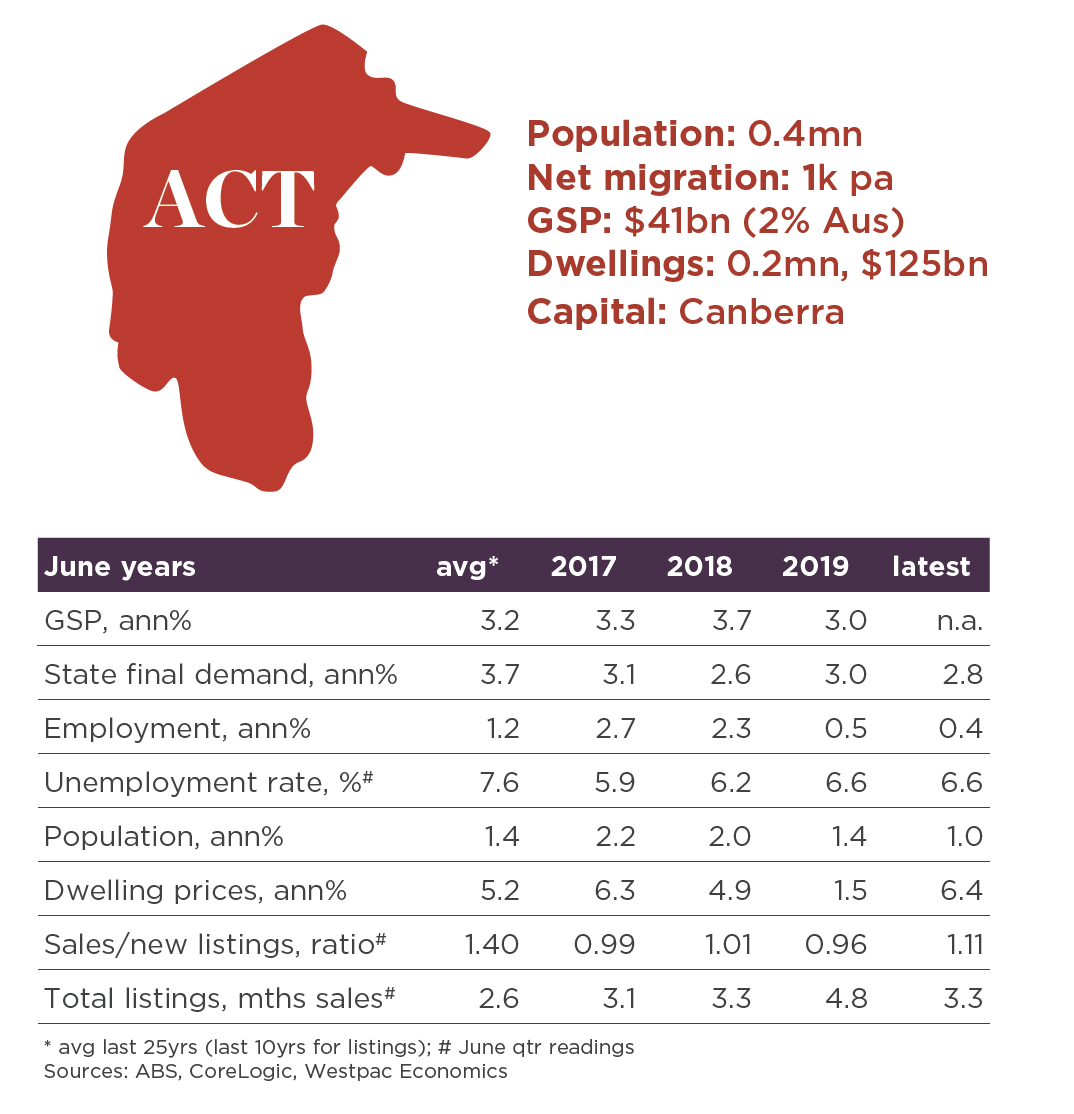What’s the outlook for the Australian property markets for 2021 and beyond?

This is a common question people are asking now that our real estate markets are up and running again.
We’ve worked out way through many of the effects of the Coronavirus Pandemic and out of Australia’s first recession in 30 years.
I guess many property investors and home buyers looking for property market prediction or forecasts – they’re wanting to know what’s going to happen to real estate prices moving forward.
Well forecasting is difficult – especially about the future – but in this detailed article I’ll explain what our research suggests is ahead for Australian house prices in the next decade till 2030.
But first let’s start with the current economic climate, because it’s been a weird recession hasn’t it?
Despite being in the middle of a worldwide pandemic and unemployment is still high in Australia our housing markets have remained resilient and are now moving upwards.
Looking back 2020 was an “interesting” year in property. Our housing markets looked promising at the beginning of the year after the surprise strong ending to 2019, and Sydney and Melbourne dwelling prices rose almost 1 per cent in the first three weeks of January 2020 alone.
But then along came Covid19 and many of our housing markets were put on pause because of lockdowns, leading to forecasts of 10%, 15% and even 20+% falls in property values.
But that didn’t occur, did it? In fact our housing markets were remarkably resilient.
Plagued by prolonged lockdowns, Melbourne was the worst affected property market and overall values dropped by 5.6%.
But this wasn’t everywhere in Melbourne – prices in more established suburbs held their own, while CBD apartments and lower priced properties in blue-collar areas suffered the most as did Melbourne’s rental markets.
In Sydney property values fell 2.9% between April and September 2020 but have since rebounded.
The following chart from CoreLogic shows that all property markets, other than Melbourne, finished 2020 higher than they started, and Melbourne has made up most of its lost ground and is likely to reach new heights again shortly.
In fact the modest coronavirus induced housing correction came to an end in the middle of October 2020 and that our housing markets are clearly on the move again.
There has been a palpable change in market sentiment on the ground and this is reflected in strong buyer activity at a time when there is a little good stock on the market.
Here are some of the indicators suggesting that 2021 will be a great year for property investors: –
Consumer confidence has been gradually improving, as has business confidence
Auction clearance rates have been consistently strong in the last few months of 2020, not just in the two big auction capital of Melbourne and Sydney but around Australia.
More buyers and sellers are in the market and transaction numbers have increased considerably.
At the same time the banks are keen to write new business – another positive for our housing markets.
Bank loan deferrals have been falling – there’s no chance of an avalanche of forced mortgagee sales as many were worried about.
The latest rate cut and the “guarantee” of rates remaining low for at least 3 years, will give home buyers and investors confidence
Moving forward further jobs creation, consumer confidence and business confidence (leading to spending and employment) will underpin our housing markets.
Just to make things clear…we’re not going to fall off a fiscal cliff as those naysayers predicted.
And there is no Australian property bubble that’s about to burst as those perma bears keep telling us.
Quite the opposite – there is a perfect storm of positive factors developing for our property markets next year – a confluence of multiple growth drivers which will propel our property markets into 2021 and 2022.
ANZ Bank economists recently said their earlier house price forecast on the decline of 10% from peak to trough has proven too pessimistic.
Instead they are forecasting price gains of around 9% across Australia’s capital cities in 2021.
While there are still many challenges ahead for our economy and our property markets, there are many reasons to be optimistic about certain segments of the Australian property market, particularly in the long term, as I will explain in this article.
Source: ANZ Bank
WHAT’S AHEAD?
PROPERTY PRICE FORECASTS
SYDNEY PROPERTY MARKET FORECAST
MELBOURNE PROPERTY MARKET FORECAST
BRISBANE PROPERTY MARKET FORECAST
CANBERRA PROPERTY MARKET FORECAST
PERTH PROPERTY MARKET FORECAST
HOBART PROPERTY MARKET FORECAST
ADELAIDE PROPERTY MARKET FORECAST
WHAT CAN YOU DO TO STAY AHEAD IN THE CURRENT MARKET?
I’m on record with my regular commentary as being much less pessimistic and now, around 9 months after housing market COVID-19 first hit our housing markets in our economy and the property markets have turned the corner following a relatively mild downturn.
Sure, our property markets have been supported by the government throwing a lifeline at mortgage holders and tenants, as well as the RBA and the banks supporting our housing markets.
But isn’t the government’s job to look after its constituents?

It does this by providing hospitals, ambulances, schools police and a range of facilities and infrastructure.
And it is also protecting the wealth of the 70% of Australians who owned their own home and use them as shelter.
The government well recognises the importance of feeling secure in your own home and how devastating to the economy it would be if property values fell significantly.
So I believe it has done its job well.
Having learned from previous economic downturns, it has gone in early and thrown everything including the kitchen sink at minimising the impact of this recession on the economy and on our housing markets.
Way back at the beginning of the pandemic Scott Morrison said he was going to build a bridge to get us across the other side, and it looks like he’s done that and it seems that we are standing on the other side now.
Fact is, 2021 is likely to be a year of economic recovery after a challenging end to 2020.
Source:Corelogic 15th December 2020
What’s ahead for our economy?
googletag.cmd.push(function() { googletag.display(‘div-gpt-ad-1591951428937-0’); });
Let’s start with the past year – 2020
The Australian economy entered recession in the March quarter for the first time in 28 years – impacted by the COVID-19 coronavirus as well as drought, bushfires and storms.
In the June quarter, the economy contracted by 7 per cent – the biggest fall in activity since the end of World War II. The Australian economy contracted by 0.3 per cent in 2019/20.
But the recovery is underway with the economy growing by 3.3 per cent in the September quarter – the biggest lift since March 1976.
The Australian economy is recovering due to our relative success in suppressing the COVID-19 virus as well as the speed and size of economic stimulus and support supplied by all levels of government and the Reserve Bank.
The cash rate currently stands at a record low 0.1 per cent;
Aussie dollar is near US74.3 cents;
unemployment stands at 7.0 per cent;
annual inflation is 0.7 per cent;
the S&P/All Ordinaries is near 6,930 points;
and the S&P/ASX 200 index is near 6,700 points.
The Year Ahead: 2021
As we enter 2021, it is clear that COVID-19 still dominates the landscape.
The bad news is that Europe and the US are experiencing second waves of the virus, driving case numbers to record highs and necessitating fresh lockdowns.
The good news is that effective vaccines are set to be distributed across the globe with doses already being rolled out in the UK.
The economic outlook will clearly be dictated by the virus and how quickly the vaccines can stem case numbers and allow economies to start repairing.
After contracting an estimated 2.5 per cent in 2020, the global economy is tipped to rebound by 5.1 per cent in 2021.
On the same basis, the Australian economy is tipped to grow by 4.9 per cent in 2021 after contracting 2.8 per cent in calendar 2020.
The Reserve Bank Governor has committed to leave the cash rate at 0.1 per cent (or even lower?) for three years. Bond purchases are being employed with the hope of reducing longer-term yields.
Underlying inflation is expected to broadly hold near 1-1.5 per cent over 2021.
Unemployment is the focal point of all monetary and fiscal policy actions. Commonwealth Bank Group economists expect that the jobless rate has peaked at 7.5 per cent.
The unemployment rate is expected to ease to 5.75 per cent by the end of 2021 and ease further to 5.0 per cent by the end of 2022.
While Australia’s recession is now over, the economic road back to recovery will take years.
There will continue to be some hiccups with virus case numbers in Australia, but we are entering 2021 as a nation with plenty of optimism.
The ANZ Roy Morgan monthly consumer sentiment index is at decade highs while business confidence is at 31-month highs.
Compared to prior downturns, the recovery in consumer sentiment is the sharpest seen in the history of the series and reminds us of the unusual nature of this shock and the extensive government support provided to households and businesses.
The success in suppressing the virus has enabled our states and territories to ‘re-open’ their economies.
Governments, the Reserve Bank, commercial banks and regulators have provided all the necessary support and stimulus to ensure as many businesses as possible to stay in business and workers hold onto jobs.
Borrowing costs for businesses, households and governments are at ‘rock bottom’.
The additional boost to confidence and future prospects comes from the prospect of a vaccine – already starting to be distributed in the UK.
Stimulus measures will need to stay in place through the first quarter of 2021.
The hard decisions lie ahead about how and when to phase out fiscal measures like JobKeeper and JobSeeker.
If you remove the support too quickly, you risk a loss of economic momentum.
But leave the support in place too long and businesses and consumers lose the desire to take charge of their own destinies.
Overall the Australian economy is likely to rebound by 4.9 per cent after contracting 2.8 per cent in 2020.
Risks to this forecasts include ‘second’ or ‘third’ waves of virus cases; setbacks with vaccines; policy mistakes on the removal of support measures; and an extended delay in the re-opening of foreign borders.
Compared to prior downturns, the recovery in consumer sentiment is the sharpest seen in the history of the series and reminds us of the unusual nature of this shock and the extensive government support provided to households and businesses.
The major banks regularly report their internal data on credit card spending and consumer activity which this has lifted strongly over the last few months in part due to the opening up of Victoria but consumer spending is also strong in other states.
Going forward, consumer spending faces headwinds from elevated unemployment, weak wages growth, tapering income support and weak population growth.
The government recognises that consumer spending is a key driver of economic activity and that’s one of the reasons it is so keen to reduce unemployment and support our economy.
Property markets have turned the corner
When Australians feel comfortable and confident about the value of their homes, their castle, they experience a wealth affect which encourages them to spend more.
The Stock Market is Rallying
Rising stocks prices are important for several reasons – they show investors are confident in the earnings and profits of the business sector and they boost the wealth of shareholders which underpins confidence and spending.
A vaccine may be close
This will boost confidence and possibly allow Australia to open its borders.
Clearly uncertainty remains but with Melbourne’s lockdown now ended this will kickstart the recovery in Australia’s second largest economy.
However the recovery in the other states are slowing a little, yet all the leading economists believe Australia will see significant economic growth moving forward.
What about house prices?
Clearly our housing markets haven’t been immune to the Coronavirus economic fallout, but the impact on property values has been minimal and the markets are clearly on the move again.
Let’s look at some of the most recent forecasts for property prices in 2021-22.
Westpac Bank
Westpac Bank recently upgraded its house price predictions suggesting double digit growth in our capital cities over the next 2 years.
ANZ Bank
ANZ have made some more conservative property market predictions for the next year:-
Source: ANZ Bank
NAB
The NAB changed their view on property prices for the next year and now expect rises of around 5% over 2021 and 6% over 2022 – with house price growth likely to be stronger than the apartment segment. 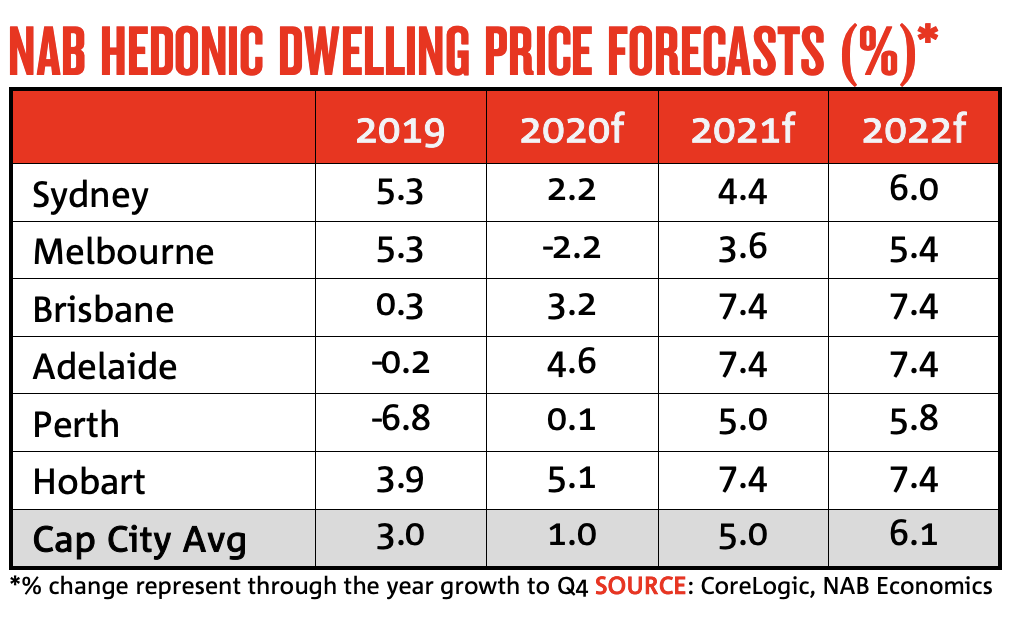 This change in NAB’s housing market outlook comes after substantial upgrades to their forecasts for near-term activity and unemployment, as well as the fact that activity in the housing market has held up substantially better than they initially expected.
This change in NAB’s housing market outlook comes after substantial upgrades to their forecasts for near-term activity and unemployment, as well as the fact that activity in the housing market has held up substantially better than they initially expected.
NAB now expect that lower interest rates for an extended period will be a key support to the housing market over the next couple of years, seeing a boost to prices across the country. ‘
While the deterioration in the labour market would normally weigh on house prices, the significant government support has mitigated the rise in unemployment and hit to household incomes.
However, the NAB sees the sharp slowdown in population growth due to border closures as the key risk to house prices, particularly for Sydney and Melbourne.
SQM Research
In his Housing Boom and Bust Report 2021 SQM’s Loius Christopher’s base case forecast is for dwelling prices to rise between 5% to 9% .
ACTUALS
2021
Scenario 1
(base case)
2021
Scenario 2
2021
Scenario 3
2021
Scenario 4
City/Region
· 12 months to
22-Nov-2020All DwellingsSource: Corelogic
· Cash Rate unchanged at 0.1%· QE Expands
· 3rd COVID-19 wave contained via more lockdowns
· JobKeeper extended to Sept Qtr 2020
· Progressive roll out of Covid vaccine
· JobKeeper phased out as planned (March)· JobSeeker returned to base
· QE unchanged. Rates unchanged
· Progressive roll out of Covid vaccine
· 3rd COVID-19 wave contained via more lockdowns
· Better than expected roll out of Vaccine in 1st half of year· Bounce in employment
· No more lockdowns, State borders remain open, regional hub open
· JobKeeper phased out as planned
· QE scaled back after mid-year
· No Vaccine released in 2021· International/State borders remain closed
· Negative cash rate
· JobKeeper/Seeker extended to end of year
Perth
+0.8%
+8% to +12%
+8% to +12%
+10% to +15%
+3% to +6%
Brisbane
+3.5%
+4% to +8%
+4% to +7%
+5% to +9%
+3% to +6%
Darwin
+2.8%
+6% to +9%
+3% to +6%
+3% to +6%
+6% to +9%
Melbourne
+0.7%
+2% to +6%
-5% to 0%
-1% to +4%
-3% to +3%
Sydney
+6.1%
+7% to +11%
0% to +4%
+3% to +7%
+4% to +8%
Adelaide
+4.4%
+6% to +10%
+1% to +4%
-2% to +2%
+4% to +8%
Hobart
+6.4%
+3% to +7%
-2% to +3%
+3% to +6%
+1% to +3%
Canberra
+6.8%
+5% to +9%
+5% to +9%
+4% to +7%
+2% to +6%
Capital City Average (weighted)
+3.5%
+5% to +9%
0% to +4%
+2% to +6%
+2% to +6%
Source: Christopher’s Housing Boom and Bust Report 2021
Christopher’s base case forecasts assume ongoing support from the Federal Government and the Reserve Bank of Australia over 2021.
The forecasts also assume a progressive rollout of a Covid-19 Vaccine and the potential for a 3rd wave of the virus.
Of course at times like this, forecasting median house values or even forecast figures are of little value.
One needs to get more granular to understand what is really going on.
Each state is divided into multiple markets, by geography, price point and type of accommodation.
Each of our capital cities has an inner and near CBD property market, a inner suburban market, a group of middle ring suburbs and outer suburban property markets.
And then there are apartments – either high-rise or medium density, townhouses, villa units and houses. There are also new and establish property markets.
And each of these market segments behaves differently.
Currently most of the property sales occurring are in the lowest price points with few discretionary sellers in the more established suburbs and higher bracket suburbs.
This means that the palette of properties currently being sold is generally in the lower price bracket and this alone will bring down reported median home values.
But this doesn’t accurately reflect the value of particular properties in any specific market, but more of the types of properties being sold.
We regularly report buyer demand as being shown by realestate.com.au’s Weekly Search Report and as you can see from the chart below, buyer demand is considerably higher than a year ago.
Moving forward some areas will strongly outperform others
The coronavirus pandemic has forced all Australians to reevaluate how we live our lives.
Offices were shut, lockdowns were in place and moving forward people are likely to continue working at home more than ever.
This means gone are the days where our ‘home’ was simply the place we rest our heads and enjoy some down time between work and our social lives – the coronavirus social distancing has put an end to life as we once knew it.
If social distancing and the Covid-19 environment has taught us anything, it has taught us the importance of the neighbourhood we live in.
If you can leave your home and be in walking distance of, or a short trip to, a great shopping strip, your favourite coffee shop, amenities, the beach, a great park, the recently implemented coronavirus restrictions might seem a little more palatable than if you had none of that on your doorstep.
That’s why choosing the right neighbourhood is important for property investors?
In short, it’s all to do with capital growth, and we all know capital growth is critical for investment success, or just to create more stored wealth in the value of your home.
Sure there is always the opportunity to add value through renovating your property or making a quick buck when buying well.
But these are one off’s and won’t make a long term difference if your property is not in the right location because you can’t change its location.
This is key, because we know that 80% of a property’s performance is dependent on the location and its neighbourhood.
In fact, some locations have even outperformed others by 50-100% over the past decade.
And it’s likely that moving forward, thanks to the current environment, people will place a greater emphasis on neighbourhood and inner and middle-ring suburbs where more affluent occupants and tenants will be living.
These ‘liveable’ neighbourhoods with close amenities is where capital growth will outperform.
How do we identify these locations?
What makes some locations more desirable than others?
A lot has to do with the demographics – locations that are gentrifying and also locations that are lifestyle locations and destination locations that aspirational and affluent people want to live in will outperform.
It’s well known that the rich do not like to travel and they are prepared to and can afford to pay for the privilege of living in lifestyle suburbs and locations with a high walk score– meaning they easy access to everything they need.
So lifestyle and destination suburbs where there are a wide range of amenities with 20 minutes walk or drive are likely to outperform in the future.
At the same time many of these suburbs will be undergoing gentrification – these will be suburbs where incomes are growing, which therefore increase people’s ability to afford, and pay higher prices, for property.
A good neighbourhood means different things to different people, but there are some key factors which help to determine which locations have the potential to grow in value faster in the future.
Generally, a good neighbourhood is determined on the physical location, suburb character and its close proximity to amenities such as a shopping strip, park, coffee shops, education, and even some jobs.
It’s obvious then that in our new ‘Covid’ world, people will want to be in a location where everything they need is in a short 20-minute proximity – whether that is on public transport, bike ride or walk – to their home.
In planning circles this concept is known as the ‘20-minute neighbourhood’.
Many inner suburbs of Australia’s capital cities and parts of their middle suburbs already meet the 20-minute neighbourhood tests, but very few outer suburbs do because there is a lower developmental density, less diversity in its community and less access to public transport.
Supply and demand
For the last few decades, continued strong population growth has been a key driver supporting our property markets.
Australia’s population was growing by around 360,000 people per annum, meaning we needed to build around 170 to 180,000 new dwellings each year to accommodate all the new households.
Since 60% of our growth is dependent on immigration, in the short-term population growth will fall, but they should increase again as soon as overseas immigrants will be allowed to come to our shores.
In the meantime, the oversupply of dwellings in many Australian locations is now dwindling and there are very few new large projects on the drawing board.
Considering how long it takes to build new estates or large apartment complexes, we’re going to experience an undersupply of well-located properties in our capital cities in the next year or two.
In the next few months supply will be constrained because of very few vendors are putting their properties on the market.
Think about it… unless you really had to sell you wouldn’t place your property on the market today would you?
The lack of good stock at a time when there is still reasonable demand by purchasers looking to take advantage of the opportunities the market presents means it is unlikely house prices will fall dramatically.
What about affordability?
With interest rates at historic lows, housing affordability is as cheap as it ever has been.
I’m not saying the properties are cheap – they never have been if you want to live in great locations in major world class cities.
But for those first home buyers wanting to get a foot on the property ladder, or established home buyers wanting to upgrade, or investors looking to hold onto a property, the holding costs are less than they ever have been.
And the RBA has declared that interest rate will not increase until unemployment is back to within their preferred range of around 4.5%.
They have said this will be unlikely to occur in the next three years.
In other words we are in unprecedented times where we don’t have to worry about rising interest rates the foreseeable future.
House price forecasts
In the medium term, property values will be linked to the extent that quarantine measures affect income, employment, borrowing capacity and credit availability.
However, I’m comfortable with the underlying long term fundamentals supporting our property markets in the medium to long term.
Let’s look at a couple of them…
Population growth
As I said, in the short-term population growth will fall, but this should increase again as soon as overseas immigrants will be allowed to come to our shores.
Australia is likely to be seen as one of the safe haven’s in the world moving forward.
Declining housing supply
The oversupply of dwellings in many Australian locations is now dwindling and there are very few new large projects on the drawing board.
Considering how long it takes to build new estates or large apartment complexes, we’re going to experience an undersupply of well-located properties in our capital cities in the next year or two.
Interest rates are low and will go down further
The prevailing low interest rate environment is making it easier to own a home, either as an owner occupier or investor.
In fact, it’s never been cheaper for investors to own a property with the “net outlay” – the out-of-pocket expenses – being the lowest they’ve been for decades considering how cheap finance is today.
Smaller households are becoming the norm
Sure many people live in multigenerational household, but pretty soon Millennials will make up one third of the property market and their households tend, in general, to be smaller as are the households of the booming 65+ year old demographic.
More one and two people households means that, moving forward, we will need more dwellings for the same number of people.
More renters
Soon 40% of our population will be renters, partly because of affordability issues but also because of lifestyle choices.
The government isn’t providing accommodation for these people. That’s up to you and me as property investors.
First home buyers are back
First home buyers are back with a vengeance, in part thanks to the government’s new scheme to encourage them, but also because of cheap finance and rising property values.
As opposed to established homebuyer who have a “trade in” that is increasing in value, if first home buyers wait to get into the market they’re finding the market moving faster than they can save, so they’re hopping on board the property train as quickly as they can.
The underlying fundamentals are strong
Sure our economy is taking a hit and the share market is volatile, but our property markets are underpinned by the fact that 70% of property owners are home owners who are there for the long term.
They’re not going to sell up their homes – they’d rather eat dog food than give up their homes.
And the Australia’s banking system is strong, stable and sound.
Even though a few home buyers have overcommitted themselves financially, there should be no real concern about household debt because, in general, it is in the hands of those who can afford it.
There is currently a very low rate of mortgage default of mortgage to increase.
As the community starts to become more concerned about the economic impact of the Corona virus, it is likely that there will be a flight to quality assets, and bricks and mortar have always stood the test of time.
In other words, the share market volatility will make some investors look to real estate as an alternative secure investment vehicle underpinned by 7 million homeowners in Australia.
In fact, it the only investment market not dominated by investors.
Sydney Property Market Forecast
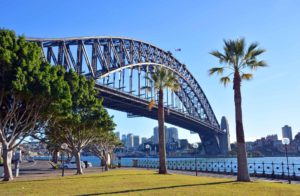
Through the COVID period downturn, Sydney home values from a peak-to-trough perspective were down just -2.9%.
Sydney posted its first monthly gain in housing values in October after five months of consistent falls and property values have been slowly rising ever since.
In the last month or two there has been a resurgence of buyer and seller interest in the Sydney property market and auction clearance rates have consistently been in the high 70% range suggesting there are more buyers than there are sellers and this always leads to higher property prices
More investors are getting into the Sydney market now recognising that there are no bargains to be found, and that in 12 months time the properties they purchased today will look like a bargain.
There is currently a flight to quality, with A gradet homes and investment grade properties selling quickly
However B grade (secondary) dwellings are languishing on the market and C grade properties are having real difficulty finding a buyer.
Sure there are fewer good properties for sale at the moment, and many of the good ones are for sale off market, however if you’d like to know a bit more about how to find these investment gems give the Metropole Sydney team a call on 1300 METROPOLE or click here and leave your details.
Melbourne Property Market Forecast
Melbourne Dwelling prices; Source: Westpac November 26th 2020
Before Coronavirus hit our markets, Melbourne property prices were surging with dwelling values up 12% higher to reach new highs.
While Melbourne housing values suffered because of its extended lockdown, which severely impacted market activity over the past three months, with CoreLogic estimates showing a 34% drop in settled sales compared with the same period a year ago.
But commencing in early November the Melbourne property market has rebounded.
According to Corelogic Melb values climbed 0.22% in the first 12 days of November, outperforming Sydney, Brisbane & Adelaide.
No one rang a bell – but the Melbourne market bottomed mid October.
At Metropole we’re finding that strategic investors with a long-term view and homebuyers looking to upgrade are still in the market, picking the eyes out of the off market properties.
If you’d like to know a bit more about how to find investment grade properties in Melbourne please in the balance of this year give the Metropole Melbourne team a call on 1300 METROPOLE or click here and leave your details.
Brisbane Property Market Forecast
Brisbane’s property values remained resilient over the year, especially given the economic impact of COVID-19.
Price growth or residential real estate had been more subdued in the lead up to the COVID-19 outbreak compared to Sydney and Melbourne and, in turn, Brisbane only experienced a mild downturn and property values have now been rising over the last few months.
With the success in containing COVID-19 and its associated restrictions and the RBA assuring us that the recession is over, property market confidence has lifted and Queensland has recorded an impressive recovery in house prices.
First-home buyers are taking advantage of incentives and established home buyers with secure incomes will be lured by historically low interest rates
At the same time investors, not only from Queensland, but from interstate are finding the price points and rental returns of Brisbane property very favourable.
Domain’s Buyer Demand Indicator shows houses remain a firm favourite of prospective home hunters, with demand rising post-lockdown and it remains significantly elevated compared to last year.
However, unit demand has been sliding since late May although remains slightly higher than last year, with investment stock (not investment grade stock but those poorly built and designed high rise apartments) likely to be impacted most.
Westpac Bank recently updated its property forecasts, with Brisbane prices tipped to surge 20 per cent between 2022 and 2023.
Brisbane is likely to be the one of the best performing property market over the next few years, while some locations in Brisbane have strong growth potential, and the right properties in these locations will make great long term investments, certain submarkets should be avoided like the plague.
While some locations in Brisbane have strong growth potential, and the right properties in these locations will make great long term investments, certain submarkets should be avoided like the plague.
Now read: Brisbane property market – how will Coronavirus affect it?
Our Metropole Brisbane team has noticed a significant increase in local consumer confidence with many more homebuyers and investors showing interest in a property.
At the same time we are getting more enquiries from interstate investors there we have for many, many years.
If you’d like to know a bit more about how to find investment grade properties in Brisbane please give the Metropole Brisbane team a call on 1300 METROPOLE or click here and leave your details.
Canberra Property Market
Canberra’s property market has been a “quiet achiever” with dwelling values having reached a new peak after growing 6.8% over the last year .
Considering a large percentage of Canberra population is employed by the government or industries supporting the public sector, Canberra’s property market has not really felt the effects of the upcoming recession like our other capital cities did.
Perth Property Market Forecast
Perth’s long awaited recovery was interrupted by COVID-19 with values falling over both May, June and July but now Perth’s housing market is back on a recovery trajectory, with home values posting a third straight month of rises.
Values are 0.8% higher over the past three months, but that wasn’t enough to reverse the earlier 2.2% drop recorded through the early months of COVID.
Housing market activity has been tracking higher, with CoreLogic’s estimate of settled sales over the past three months 13% higher than a year ago.
Perth continues to show the lowest median house values of any capital city, at $475,200.
Such low housing prices, along with record low mortgage rate, improving economic conditions and government incentives are some of the factors supporting renewed price growth.
Rental markets are amongst the tightest of any capital city, with the lift in rents through the COVID period to-date the highest amongst the capital cities.
Hobart Property Market Forecast
Hobart was the darling of speculative property investors and the best performing property market in 2017- 8, and while dwelling values reached a record high in February 2020, its boom interrupted by Covid-19.
Hobart property values are again with values up 6.5% over the past year.
Adelaide Property Market Forecast
Adelaide’s housing market has moved from strength to strength over recent month, with home values reaching a new record high in October.
Dwelling values were 1.2% higher in October and that was the largest monthly gain since early 2008, just before GFC induced correction.
Relatively low housing prices, an effective flattening of the virus curve and the stimulus of low interest rates are likely to be the main factors behind the growth in housing values.
From a geographical perspective, every sub-region of Adelaide has recorded a rise in values over the past three months.
The strongest growth conditions were in Onkaparinga, where housing values are estimated to be 5.4% higher over the rolling quarter.
Now is the time to take action and set yourself for the opportunities that will present themselves as the market moves on
If you’re wondering what will happen to property in 2020–2021 you are not alone.
You can trust the team at Metropole to provide you with direction, guidance and results.
In challenging times like we are currently experiencing you need an advisor who takes a holistic approach to your wealth creation and that’s what you exactly what you get from the multi award winning team at Metropole.
If you’re looking at buying your next home or investment property here’s 4 ways we can help you:
Strategic property advice. – Allow us to build a Strategic Property Plan for you and your family. Planning is bringing the future into the present so you can do something about it now! This will give you direction, results and more certainty. Click here to learn more
Buyer’s agency – As Australia’s most trusted buyers’ agents we’ve been involved in over $3Billion worth of transactions creating wealth for our clients and we can do the same for you. Our on the ground teams in Melbourne, Sydney and Brisbane bring you years of experience and perspective – that’s something money just can’t buy. We’ll help you find your next home or an investment grade property. Click here to learn how we can help you.
Wealth Advisory – We can provide you with strategic tailored financial planning and wealth advice. Click here to learn more about we can help you.
Property Management – Our stress free property management services help you maximise your property returns. Click here to find out why our clients enjoy a vacancy rate considerably below the market average, our tenants stay an average of 3 years and our properties lease 10 days faster than the market average.
You may also be interested in reading:
What can history teach us about what’s ahead for property
How to Choose a Property Advisor
What’s ahead for Brisbane’s property market?
Property Investment In Sydney – 20 Market Insights
Property Investment In Melbourne – 29 Real Estate Market Tips
googletag.cmd.push(function() { googletag.display(‘div-gpt-ad-1592314976732-0’); });
Read more: propertyupdate.com.au









